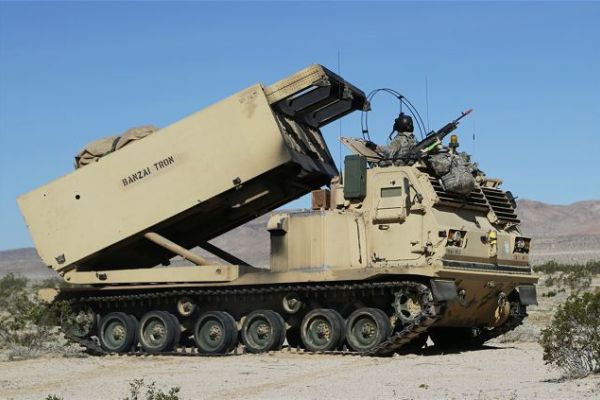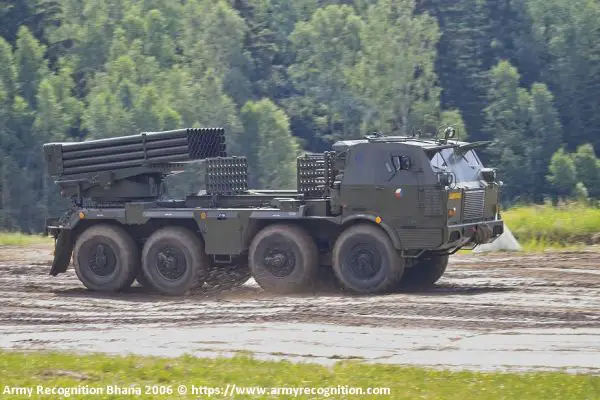Multiple Launch Rocket Systems.
M-1989 MLRS.

The M-1989 is a North Korean 240mm Multiple Rocket Launcher (MLRS), an upgraded variant of the earlier M-1985. The M-1989 retains the same armament but is mounted on the Chinese-built SX 2150 6x6 heavy truck chassis, providing improved mobility and operational flexibility. First identified by US intelligence in 1989, this artillery system is designed primarily for artillery fire support in conventional warfare and strategic deterrence. The M-1989 can launch various rockets, including high-explosive, incendiary, smoke, and chemical warheads, at a maximum range of 43 kilometers.
Country users: North Korea
Description
The M-1989 was developed in North Korea as part of the country's ongoing efforts to enhance its artillery and rocket capabilities. It is essentially a modified version of the M-1985, with the primary distinction being the change of platform to the Chinese SX 2150 6x6 truck chassis. This modernization enhances the vehicle's mobility and makes it more versatile in different operational environments.
The system can launch up to 12 rockets in rapid succession. It is primarily intended for battlefield artillery support, enabling it to deliver heavy, long-range firepower. The M-1989 can launch a wide variety of 240mm rockets, which are unguided and spin-stabilized. Although it is often used in conventional operations, its potential for launching chemical and incendiary rockets suggests a strategic role in deterring adversaries in both conventional and asymmetric conflicts.
The vehicle's first appearance in 1989 gave military analysts crucial insights into North Korea's evolving artillery capabilities. Since then, it has become integral to the country's artillery forces, offering both conventional bombardment and a strategic deterrent.
M-1989 MLRS variants:
- M-1985: Previous version of the M-1989 but based on a Isuzu 6×6 heavy truck.
Technical Data
-
Armament
The M-1989 MLRS is armed with 12 launching tubes, each capable of firing 240mm unguided spin-stabilized rockets. The launcher is typically configured in two blocks of two rows of 6 tubes, making it easy to identify. A standard High-Explosive Fragmentation (HE-FRAG) warhead weighs 90 kg, with 45 kg of high explosives. Other types of warheads that can be deployed include incendiary, smoke, and chemical variants, providing the launcher with flexible operational capabilities.
The maximum firing range of the M-1989 is 43 kilometers, enabling it to strike targets at considerable distances. It can deliver its payload in two modes: either as a full salvo of 12 rockets or one by one, with a launch rate of one rocket every 4 to 8 seconds. Thus, it can launch all rockets within 48 to 96 seconds, depending on the operational mode.
The firing sequence begins with the manual lowering of four stabilizing jacks to ensure stability during the launch. Both the elevation and traverse controls are manually operated, adding to the system's simplicity but requiring skilled crew members for optimal performance.
A semi-automated reload system is available, where crew members manually load the rockets into the launch tubes. The vehicle is designed to leave its firing position rapidly, within 2 minutes of completing a salvo.
-
Design and protection
The M-1989 is based on the Chinese SX 2150 6x6 heavy truck chassis, which features a boxy, four-door cab accommodating the driver, commander and up to three crew members. The launch platform is mounted at the rear of the chassis, while the crew sits in a two-bench seating arrangement located centrally. The unarmored cab offers no significant protection against small arms fire or shrapnel.
The chassis provides sufficient mobility but does not incorporate specialized armor for direct protection. The design focuses more on mobility, firepower, and operational flexibility than on survivability under direct enemy fire.
-
Mobility
The M-1989's mobility is derived from its base platform, the SX 2150, which is a 6x6 military truck developed in China in the late 1960s. The SX 2150 truck chassis provides a stable and versatile foundation for the rocket launcher, with one front axle and two rear axles, supporting a range of operational environments, both on and off-road.
The truck chassis can carry a load of up to 5,000 kg off-road and 10,000 kg on-road. Its maximum speed is 70 km/h, and it can tackle gradients up to 58%, making it suitable for challenging terrains. The vehicle's turning radius is 9 m, and it can ford water obstacles up to 1.2 m deep.
The vehicle's 355 mm ground clearance ensures that it can maneuver over rough and uneven terrain. The 280 liter fuel tank provides a reasonable operational range for sustained missions.
-
Combat Equipment
The M-1989's fire control system is fairly simple. It relies on manual controls for azimuth and elevation adjustments, similar to earlier Soviet MLRS systems like the BM-21 Grad. These adjustments allow the system to engage targets at a variety of distances, up to a maximum of 43 km.
The vehicle is likely equipped with radio communications for coordination with higher command elements, allowing for the efficient execution of fire missions. In contested environments, it may also feature jam-resistant communications systems to ensure reliable communication even during electronic warfare efforts.
In terms of targeting, the system likely uses a manual targeting system, which requires the operator to identify targets and adjust the launch settings accordingly visually. The lack of automated targeting or advanced fire control systems suggests that the M-1989 is focused more on volume fire and saturation strikes, relying on launching multiple rockets in a short time to overwhelm enemy positions.
Specifications
-
Armament
12 launcher tubes for 240mm rockets
-
Country users
North Korea
-
Designer Country
North Korea
-
Combat Equipment
Manual sight system, manual control for elevation and traverse, radio communication system
-
Crew
5
-
Armor
No armor
-
Weight Truck
± 20,000 kg
-
Speed Truck
70 km/h road speed
-
Range Rocket
43 km maximum
-
Dimensions
Length: 7.12 m; Width: 2.52 m; Height: 3.05 m






































